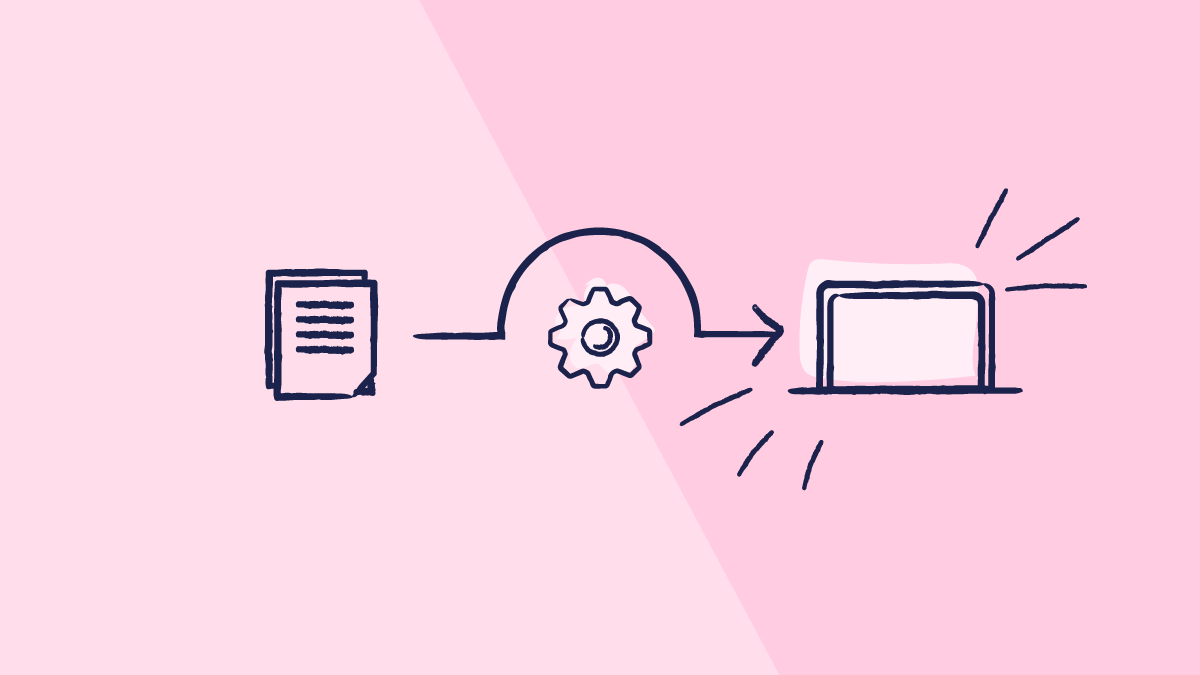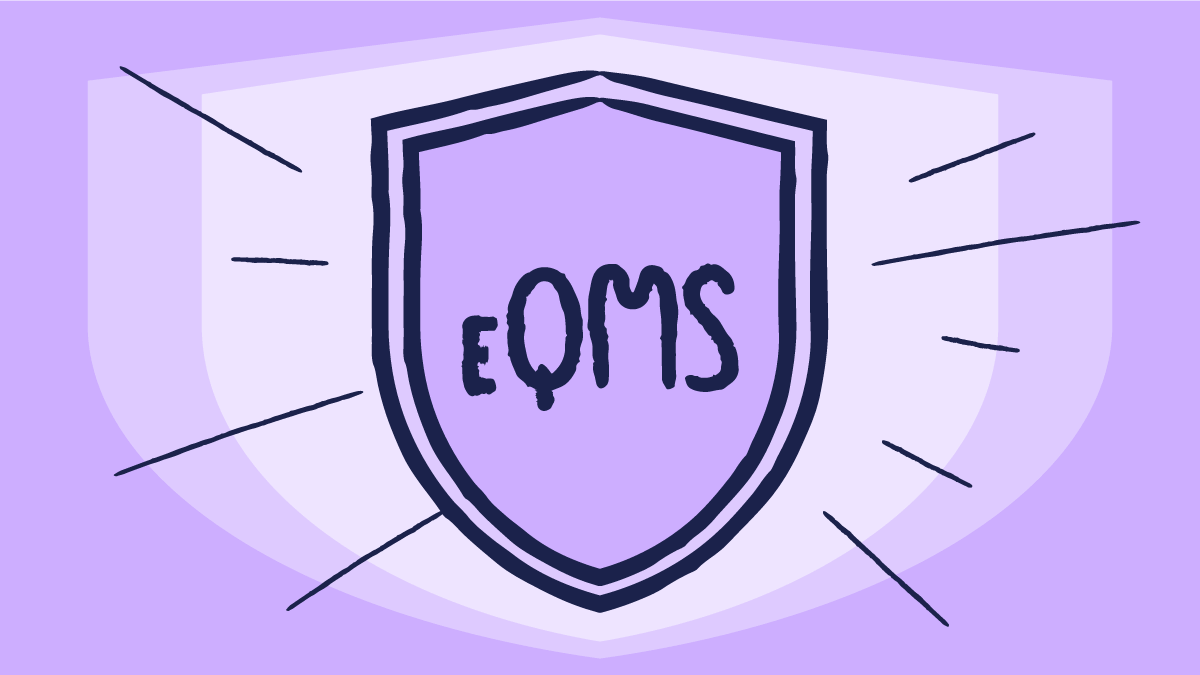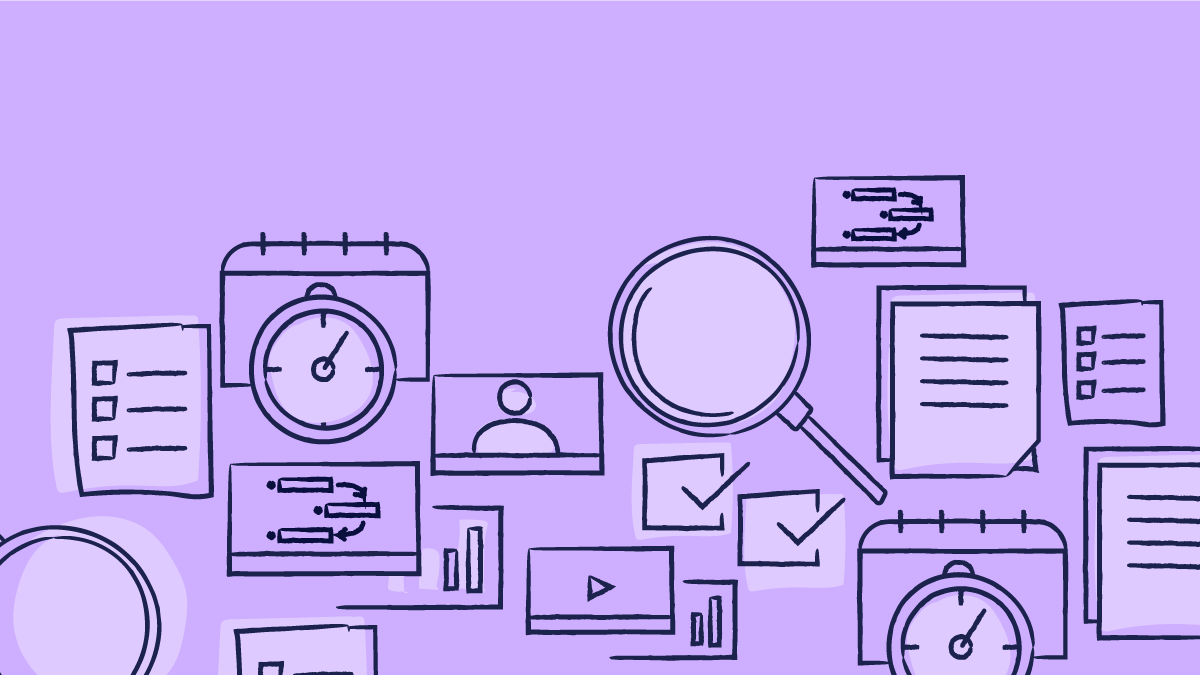
Are you spending countless hours sifting through disorganized spreadsheets and SharePoint documents, or worried sick about your next audit due to the sheer volume of documentation that you have to prepare?
Needless to say, an effective electronic Quality Management System (eQMS) is not just a fancy tool but a game-changer for us in Quality Assurance (QA).
An eQMS runs the central part of all quality activities. It gathers all evidence in one place, automatically records activities such as CAPA, change management, audits, training, investigations, and has an iron-clad audit trail of every action. Not to mention it’s validated. What more could you want?
It’s important to note that eQMS implementation has nothing to do with buying computers and disposing of paper. It's a paradigm change much more than that: abandoning obsolete manual processes in favour of a lean, enterprise-wide eQMS.
In this article, we're going to discuss the biggest pitfalls that kill most eQMS implementation projects, provide you with a step-by-step plan, give you our practical tips, and conclude with a real-world success story that no doubt will open your eyes wide as to just what is really possible.
Key takeaways
What are the challenges that companies may come across during eQMS implementation?
Among the projects I've rescued, and a few scars I've left behind, these are the repeat offenders:
- Management isn't fully on board. If the people at the top aren't visibly supporting the eQMS – by providing budget, time, and quick decisions – your project will lose steam. Teams get confused, things get out of sync, arguments over what's in or out of scope drag on, and people just lose faith.
- A messy start for new users. When you rush things without a clear plan for bringing in your experts and daily users – no clear roles, no proper access to test systems, or choppy hand-offs between your team and the vendor – confusion quickly turns into resistance.
- People resisting the change. If your team doesn't truly understand why you're making this shift, they'll stick to their old ways and workarounds. Think of managing this change as its own mini-project, with clear communication and ways for people to share their feedback.
- Being too hopeful about time and resources. Often, companies don't quite realize how much work, time, and people power are actually needed. This leads to going over budget and leaving tasks unfinished.
- Vague User Requirement Specifications (URS). Imagine writing down that you want – "the system should be user-friendly." But what does that actually mean for you? Is it….
- that a new user can complete a basic task without training?
- that key functions are accessible within three clicks?
- that the interface uses clear, non-technical language?
That's often how URS are written, and it means you end up with a system that doesn't actually do what your team needs. If your URS isn't clear, you can't properly test it, which means the project keeps changing, and you'll have to redo a lot of testing later.
- Hard-to-use software. If the eQMS looks confusing or is too complicated to navigate, users will get frustrated. Make sure you pick a system that's easy to use, and ask for feedback early on.
- Poor communication. If people aren't talking to each other effectively, it leads to misunderstandings, duplicated work, and delays, making the whole eQMS rollout much harder.
- Moving your old data over. Your old documents often come in all sorts of messy formats. Without a strong plan to clean up and standardize this data, you'll face delays and create errors that auditors will find.
- Validation theater. This is when you just check off boxes on a list without really focusing on the actual risks. It leads to thin evidence and undocumented problems, which leaves you exposed when an auditor comes knocking.
I remember one team that spent months just ticking boxes to 'validate' their system. But when a real audit happened, they found their internal processes weren't actually working with the system. That's validation theater for you – it looks good on paper, but it falls apart under pressure. That's why a risk-based approach to validation, like the GAMP 5 guidelines suggest, is absolutely non-negotiable.
- Not enough support after launch. If you don't have a clear plan for who's responsible for what (a "RACI matrix") and who owns which processes, training efforts fail, performance numbers disappear, and teams just go back to their old, comfortable (but inefficient) ways.
- Training that doesn't stick. Quick, surface-level training sessions don't really help. You need to invest in hands-on workshops that let people practice in real-life scenarios, directly tied to their new daily tasks.
- Gaps in compliance and data trustworthiness. If you don't line up with rules like FDA 21 CFR Part 11, EU GMP Annex 11, or ISO 13485, you're setting yourself up for audit findings. Make sure the system automatically tracks every action, uses electronic signatures properly, and has strong access controls built in from the start.
Have you spotted two or more of these challenges? Don't worry, it's not the end of the world! Luckily, for every challenge, there's a way to prevent or fix it. Just head over to our top tips to see how to tackle them.
Recommended learning: If you’re struggling to get your management on board with eQMS implementation, then we highly recommend forwarding them this article!
eQMS implementation steps
Before we dive into the onboarding process, data import, training, and the other key eQMS implementation phases, first things first - you need a solution that perfectly aligns with your quality management goals. And that’s what makes eQMS vendor selection a vital part of your eQMS implementation journey.
eQMS vendor selection
The process for selecting the right eQMS vendor is a strategic decision that significantly impacts an organization's performance and involves a thorough assessment of specific needs and objectives.
It is a strategic step to find a fit-for-purpose eQMS. It must align with your organization’s workflows, address bottlenecks, improve efficiency, ensure regulatory compliance, and support strategic goals.
The selection process can be broadly divided into these key phases:
Build your cross-functional eQMS implementation team
Get your core team—Quality, Compliance, Regulatory Affairs, Manufacturing, Logistics, IT, Sales, and Finance—around the table from day one. Define clear objectives, scope, and success metrics together so everyone owns the outcome.
Then win executive buy-in by sharing a short Return-on-Investment of your eQMS brief (think audit-day savings, faster approvals, lower risk) and lock in formal approval before you even pick a vendor. With sponsors visibly backing the budget, timeline, and decisions, your eQMS project will cruise, not crawl.
Define needs assessment
Before you even demo a system, run a software needs assessment—a structured way to identify, document, and rank exactly what your organization demands from an eQMS. Think of it as a pre-purchase checklist that maps every capability against your unique workflows, compliance obligations, and business goals.
Start by gathering reps from your team to map out all processes. Then list and prioritize:
- Core functions: change control, CAPA, document management
- Tech needs: integrations, hosting model, uptime
- Regulatory must-haves: 21 CFR 11, Annex 11, ISO 13485 traceability and audit trails
- Environment: cloud vs. on-premise, disaster recovery
- Non-functional specs: performance targets, security controls, support SLAs
With that simple, prioritized checklist in hand, you’ll zero in on eQMS solutions that fit your world—no surprises, no wasted demos.
Craft clear User Requirement Specifications (URS)
To gain clearer visibility, kick off by listing your URS in a simple checklist, then rank each one by priority and business impact. Next, build a traceability matrix to link every requirement back to its origin, category, and importance.
Finally, don’t skip data-integrity and security specs—you need to cover EU GMP Annex 11 and FDA 21 CFR Part 11 from the start.
Compile your list of eQMS vendors and submit requests
Gather a list of potential vendors and submit a Request for Information (RFI) or Request for Proposal (RFP). These documents should clearly outline the timeline and your needs. You need to decide whether the eQMS should be on-premise or cloud-based in advance. Technical features, functionalities, software cost, usability of the interface, etc., are important considerations.
Analyze the vendor’s proposals
Next, analyze the proposals received from vendors, evaluating them against your enterprise’s quality management operations and the regulatory demands of your industry.
Book demos with eQMS vendors
Book live demos with shortlisted eQMS vendors so you can see the software in action and verify it meets your operational and technical requirements. Hands-on walkthroughs are the fastest way to spot integration gaps and confirm the system will fit your workflows
Evaluate an eQMS through trials and freemium programs
Before making a decision, you can also get a taste of a free trial or a freemium program offered by the eQMA vendor. It is the definitive acid test to check the eQMS live.
Conduct gap analysis
In order to find out where the eQMS falls short, you must perform a gap analysis and close those gaps.
Evaluate present and future needs
Assess current workflows and forecast future demands—growth plans, regulatory changes, and integration points—to ensure your eQMS is both scalable and flexible
Make the final choice: Choose your eQMS
During demos, evaluate the vendor's responsiveness and expertise. How fast do they respond to questions? Do they understand the life sciences?
Review the implementation support they offer—training programs, dedicated onboarding resources, and hand-holding during go-live. Finally, confirm their ongoing commitment: guaranteed SLAs, regular check-ins, and a clear roadmap for updates.
Making sure your eQMS vendor supports you every step of the way is key to long-term success.
“Choose a system that covers all of the areas that you're after. Don’t choose one where you have to make things fit. Scilife just spoke our language. It’s built by quality people, so it talks quality. It had all the modules that we needed without requiring workarounds.”
Keryn Davies, Quality Manager at Helius
Onboarding process
A smooth, structured eQMS onboarding process lays the foundation for user adoption, audit readiness, and long-term success. Before you sign the contract, verify your vendor’s plan includes:
- Initial onboarding meeting. The eQMS project begins with a kick-off email and an initial onboarding meeting organised by the vendor. It is a structured kick-off meeting to define:
- Onboarding process
- Implementation scope
- Establish a plan of action
- Set eQMS environments (test, validation, and production)
- Discuss regulatory requirements
- Assign roles and responsibilities
- Set onboarding timelines (implementation, end-user training, validation documentation, data import, integration)
- Provide access to the validation package
- Explain user training
- Discuss integrations (SSO setup materials, MS Active Directory, AzureAD, other)
- Establish communication channels and follow-up meetings
- Follow-up meetings. Regular follow-up meetings ensure eQMS implementation and onboarding remain on track, align with key stakeholders, and promptly address any roadblocks.
- Role-based training plan. Involving users in the training process is key for eQMS implementation. For instance, Scilife provides a comprehensive training tool, including module checklists, access to Scilife Academy, and Knowledge Base. There is a dedicated test environment to freely explore the eQMS platform and build confidence during the onboarding process.
“The setup process was well-organized and widely utilized, and the training and information provided throughout the implementation were of high quality. This helped us swiftly and efficiently integrate the new system into our workflow.”
Alba Merino Reyes, Deputy Technical Director (QP) at Divasa-Farmavic
Validation
In most cases, Computer System Validation is seen as one of the greatest obstacles in implementing an eQMS. To ensure software functions as intended, choose a vendor that offers a complete validation package according to GAMP 5 guidelines. This approach simplifies the final validation process at your end-user environment.
As an end user, leverage the vendor’s validation package to wrap up your final validation steps. Basically, it involves having your own Validation Plan (VP) that references the vendor’s documentation. You decide whether to execute the vendor’s PQ tests, write your own, or take other steps depending on your regulations, risk assessment, and intended purpose.
Consider this validation package from the vendor as receiving a preassembled, safety-certified car.
Instead of building the car from scratch and performing all the safety tests yourself (which would be a massive undertaking), the vendor provides a vehicle that has already undergone extensive testing and comes with a complete set of detailed safety reports and certifications (the validation package).
Data import
Migrate your legacy QMS data into the new eQMS with precision—move documents, records, and workflows into a single, centralized database. Depending on your agreement, you can either handle imports in-house or lean on your vendor’s expertise. Whichever route you choose, build in hands-on training and support to ensure a smooth transition.
The manual import option allows you to handle the import by adding documents directly into the eQMS. It gives you full control over how your data is organized.
In the vendor-led import process, the vendor handles most of the import work, so your role is to provide a template for the Excel import and provide files - documents, training, equipment, etc.
“Clear instructions made the document import process straightforward, and we could transition smoothly without data integrity issues.”
Alessandro Ballini, Executive Manufacturing Advisor at Anallergo
Integrations
An eQMS rarely operates alone. It is integrated with other existing life sciences software platforms, like ERP, LIMS. Ideally, integrations prevent data silos, reduce manual data entry, and avoid fragmented quality management systems.
When eQMSs integrate effectively, they can leverage IT security policies, especially when using Single Sign-On (SSO) solutions with multi-factor authentication.
Think of integrations like the different electrical appliances in your home. You have a refrigerator, a television, a computer, and more. Each performs a specific function, but they all need to be integrated with the house's electrical system -the eQMS in this analogy- to work properly and seamlessly draw power.
Without proper integration, you'd be trying to power them individually with batteries, leading to inefficiency and disarray. A well-integrated eQMS ensures all your quality "appliances" work together, powered by a central system, making your "home" (organization) efficient and functional.
Training: up and running quickly and effortlessly
The training process during the eQMS implementation should be designed to ensure a smooth transition and confident user adoption, addressing common concerns about adapting to new technology.
The goal is to help end users confidently navigate the platform, migrate data, and integrate their processes from day one.
For instance, Scilife provides the following training components and resources:
- User training: video courses and certifications, study guides, mindmaps, and PDFs from Scilife Academy. eQMS administrators and end users have different training plans adapted for the intended role.
- Knowledge Base: Scilife has an extensive resource with over 700 searchable articles covering FAQs, best practices, and how-to guides. It is the right source for quick answers and deeper insights.
- Module checklists: these guides provide guidelines to essential tasks and decision points, helping end users learn the system while configuring it to match their business needs.
- Supporting materials: Scilife provides document templates for commonly used document types, complete with variables that capture prevalent metadata from the eQMS system.
Sustaining momentum: Post-go-live support and follow-up.
A follow-up meeting serves as a channel of communication between the eQMS provider and customer, allowing them to establish milestones, keep track of progress, cover action points, address concerns and roadblocks, and ensure a smooth transition.
Our top tips for eQMS implementation
Here are six key tips I learned while implementing an eQMS. Aim it well and use it when necessary.

- Evaluate your needs thoroughly: Identify your scope, goals, and compliance needs. Engage all relevant stakeholders from the start. Analyze existing processes to identify inefficiencies and quality challenges.
- Prioritize user training and change management: Develop a change management strategy early, communicating the eQMS's value. Provide structured, role-based training using test environments and foster internal champions for smooth user adoption.
- Prepare data meticulously: Identify and organize legacy documents, define metadata, and configure eQMS tools for consistency. Choose the right import method (manual or assisted) and ensure thorough review and validation of migrated data post-import.
- Master your data migration strategy. Data migration is a critical compliance and efficiency driver. Legacy documents often arrive in inconsistent formats, lacking crucial metadata. This is where a clear data cleansing and standardization plan becomes your best friend. At Scilife, our onboarding team works closely with you to strategize this process, whether you opt for a structured manual import with our guidance or leverage our expertise for a seamless vendor-led transition. We focus on preserving historical traceability while ensuring your new digital records are clean, compliant, and audit-ready from day one
- Leverage vendor validation package: select vendors that offer comprehensive validation documentation (e.g., GAMP 5 validation package) to significantly reduce your validation effort. Ensure robust data integrity and security features.
- Rely on a robust onboarding process: Implement an effective onboarding program with a dedicated project manager. Take advantage of parallel activities for faster go-live, including training and data preparation. Execute the eQMS implementation with surgical precision.
How Scilife helped Subiton with their document and change control processes
When Subiton approached Scilife in late 2023, they were struggling with a paper-based quality system that involved manually stamping controlled documents, maintaining cumbersome logbooks, fragmented audit trails, and complex tracking procedures. These manual processes caused substantial operational stress, particularly during audits.
Subiton identified several critical challenges during the early stages of their eQMS implementation, including resistance from the team due to concerns over added bureaucracy, complexities around migrating and standardizing legacy documents, defining clear metadata and document coding systems, and effectively managing user access.
To overcome these issues, Subiton took a strategic approach to implementing its eQMS.
They leveraged Scilife’s document import capabilities to smoothly transition approximately 1,500 documents into the digital platform, applying standardized formatting templates gradually during routine document updates rather than attempting a complete immediate overhaul.
Subiton introduced a structured document coding system, maintaining historical traceability by preserving legacy document identifiers within the new system.
Additionally, they embraced process automation through Scilife, quickly realizing that automation streamlined operations rather than adding bureaucracy. This resulted in faster document approval processes and increased team engagement.
To further drive successful adoption, Subiton emphasized demonstrating the practical benefits of the new system to its team.
They implemented phased periodic document reviews and established clear, role-based user access controls for approximately 70 users, reinforced by comprehensive initial training sessions and ongoing support provided through Scilife’s Knowledge Base and Academy.
The results were significant and rapid. The new eQMS quickly fostered greater employee engagement, resulting in faster and higher-quality document updates. Automation of previously manual tasks considerably reduced manual effort, saved time, and minimized errors.
The ability to instantly retrieve critical data for auditors, such as open CAPAs, replaced hours of searching through physical documents, greatly boosting productivity.
Audit preparation time notably decreased, and the turnaround time for reviewing and approving change requests improved substantially. Employee satisfaction rose dramatically, driven by the intuitive and efficient workflows enabled by Scilife.
Subiton’s successful implementation underscores the powerful impact of a well-planned eQMS, highlighting improvements in regulatory compliance, operational efficiency, team morale, and overall quality management effectiveness.
Benefits of implementing an eQMS sooner rather than later
Implementing an eQMS offers substantial advantages for life sciences organizations, streamlining and enhancing quality management digitally. By converting traditional challenges into opportunities, an eQMS drives efficiency, ensures compliance, and strengthens overall business performance.
Here are the key benefits of implementing an eQMS:
Enhanced compliance and audit readiness.
- An eQMS significantly lowers compliance risks. It provides a centralized digital repository for quality documentation, ensuring documents are complete, organized, and readily accessible for audits, unlike scattered paper-based systems.
- Robust audit trails automatically log user activities, document changes, and system interactions, ensuring data integrity and clear accountability aligned with regulations like 21 CFR Part 11. Additionally, eQMS solutions, such as Scilife, deliver comprehensive validation packages, significantly reducing the burden of validation for life sciences teams.
Improves operational efficiency and workflow management
An eQMS eliminates siloed departments, manual data entry, and paper-based processes, drastically reducing errors, saving time, and minimizing waste. Using automated workflows accelerates the approval process of documents and CAPAs, speeds up critical review cycles, and accelerates the launch of new products
Fully integrated systems ensure real-time synchronization across processes such as CAPAs, document control, and complaints. The system also promotes collaboration by providing a central space for quality discussions and issue tracking, fostering teamwork and continuous improvement.
Cost reduction
- Deploying an eQMS reduces Cost of Poor Quality (CoPQ), including product recalls, rework, customer dissatisfaction, and reputational damage. For perspective, a single FDA Warning Letter can reduce a business unit’s sales by at least 15%.
- The system also reduces expenses tied to manual data handling, physical document storage, printing, mailing, and disposal. Enhanced productivity and reduced time on non-value-added activities translate into direct savings, freeing resources for strategic reinvestment.
Enhanced visibility and data management
- An eQMS centralizes quality-related data, promoting effective cross-departmental communication and enabling early identification of potential issues.
- Real-time dashboards provide instant access to quality metrics and Key Performance Indicators (KPIs), facilitating proactive decision-making and continuous improvement.
Improves quality culture
- Implementing an eQMS fosters a culture where quality is recognized as a driver of business success, rather than mere compliance. It encourages cross-functional collaboration through centralized discussions and systematic issue tracking, transforming organizational quality into a collective priority.
- Investing in an eQMS today positions your life sciences organization for future success, driving compliance, efficiency, cost savings, data-driven insights, and a robust quality culture.
“Sometimes QA is seen as annoying or an afterthought, when actually it’s the backbone. Quality should be a team effort. That is more present in our company now. By using Scilife, we turned QA into a company effort”
Suzanne Buijs, QA, RTA
Conclusion: Successful eQMS implementation with Scilife
If you want to speed up your audit readiness by 50%, cut manual errors by 70% and make quality performance visible to your organization, then Scilife could be the solution for you!
We simplify and accelerate the eQMS implementation process, ensuring your transition is smooth, strategic, and stress-free.
With comprehensive onboarding, dedicated training resources, expert validation support, and intuitive integration, Scilife helps your organization achieve faster audit readiness, higher productivity, and a vibrant culture of quality excellence.
The configurable nature of Scilife's eQMS ensures you’re always fully aligned with evolving regulations, and you’re always ready to adapt to new business demands without incurring expensive rework.
Begin your digital quality transformation today, and turn regulatory compliance into your competitive advantage.
Get in touch with our team to see how our QMS software could be the one that ticks all your boxes!
FAQs
How can I seamlessly adapt our documentation to fit the new eQMS?
Start by standardizing your document templates and clearly defining metadata and document codes. Engage your team members early, ensuring they understand the new structure. Use phased updates to gradually migrate and standardize documents within the eQMS.
What’s the best way to prepare our team for training and managing change?
Develop a structured, role-based training plan and clearly communicate the benefits and reasons for the change. Provide hands-on, scenario-based workshops, leverage internal champions, and maintain regular feedback loops to address concerns promptly.
How long does it take to implement an eQMS?
Typically, a core implementation of critical modules like Document Management and Training can be live within about 90 days. Full deployment of additional tools (such as CAPA and Change Control) and integrations may extend the timeline, depending on complexity and organizational readiness.
What should I look for when selecting an eQMS vendor?
Prioritize vendors who demonstrate responsiveness, expertise in life sciences, and comprehensive support through onboarding, training, and ongoing updates. Confirm their capabilities align with your specific regulatory, operational, and technical needs.
Why is data migration critical during eQMS implementation?
Accurate and thorough data migration prevents future compliance risks and operational inefficiencies. It ensures legacy data integrity, streamlines audits, and helps avoid delays caused by inconsistent or incomplete data.
What is validation theatre, and how can we avoid it?
Validation theatre refers to superficial compliance checks without meaningful evidence or risk-based focus. Avoid this by adopting a thorough, risk-based validation approach, leveraging comprehensive vendor validation packages, and ensuring detailed documentation and testing.
How can I effectively manage user resistance during eQMS implementation?
Address resistance proactively by clearly communicating the benefits -the why behind-, providing structured onboarding and training, fostering internal champions, and maintaining ongoing dialogue and feedback loops to build trust and adoption.
Why is ongoing post-implementation support essential?
Continued support prevents regression to outdated processes and ensures sustained user engagement. Establish clear responsibilities, regular check-ins, and ongoing training to maintain momentum and continuously enhance your eQMS.
















